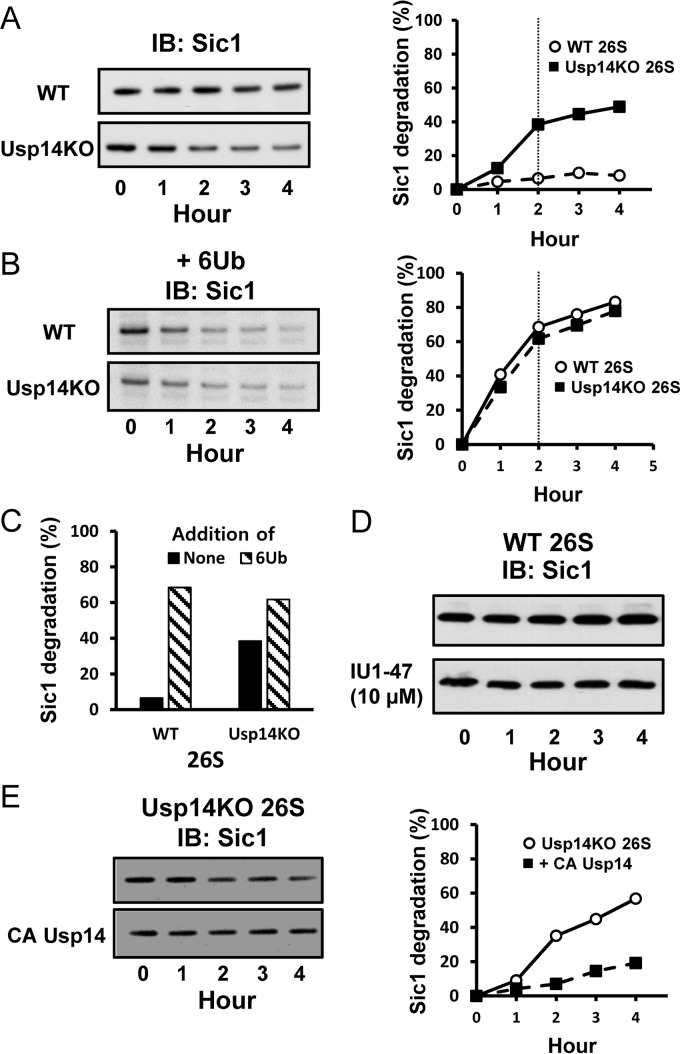Figure 4.
Usp14 reduces proteasomal degradation of unstructured proteins lacking ubiquitination. Degradation of the intrinsically unstructured protein PY-Sic1 (100 nm) by 26S proteasomes (2 nm) was assayed by Western blotting. A and B, left panels, after reaction for the indicated times, the remaining Sic1 was analyzed by Western blotting. Right panels, degradation of Sic1 was plotted by measuring Sic1 density using ImageJ software. Each point is representative of at least two independent experiments. A, unlike 26S proteasomes from WT cells, Usp14KO 26S proteasomes degrade non-ubiquitinated PY-Sic1. These data are representative of three independent experiments. B, although the basal degradation of PY-Sic1 by 26S from Usp14KO MEFs was much higher than that of WT proteasomes, the degradation rates by both types of 26S particles were quite similar in the presence of linear hexa-Ub chain (1 μm). Thus, the Ub chains stimulate degradation by the WT proteasomes much more than by the Usp14KO 26S. Similar data were obtained in three independent experiments. 26S proteasomes were incubated with the Ub chain at room temperature for 15 min before the reaction started. C, the dependence of proteasomal degradation of PY-Sic1 on the presence of a Ub chain was much greater in WT than Usp14KO 26S. Addition of Ub chain stimulated degradation 10-fold in WT 26S and 60% in Usp14KO particles. Degradation rates were compared after incubation for 2 h when reaction rates slowed below initial rates (at the vertical line in A and B). D, although knock-out of Usp14 stimulates the degradation of PY-Sic1, a Usp14-specific inhibitor IU1 (10 μm) does not stimulate the degradation of PY-Sic1 by the purified WT 26S particles nor does it affect peptide hydrolysis (data not shown) even though knock-out of Usp14 stimulates their degradation. E, addition of inactive Cys → Ala (CA) Usp14 mutant inhibits degradation of Sic1 by Usp14KO 26S. These proteasomes were preincubated with Usp14 as in Fig. 2B before the degradation reactions. These data are representative of two independent experiments. IB, immunoblotting.

